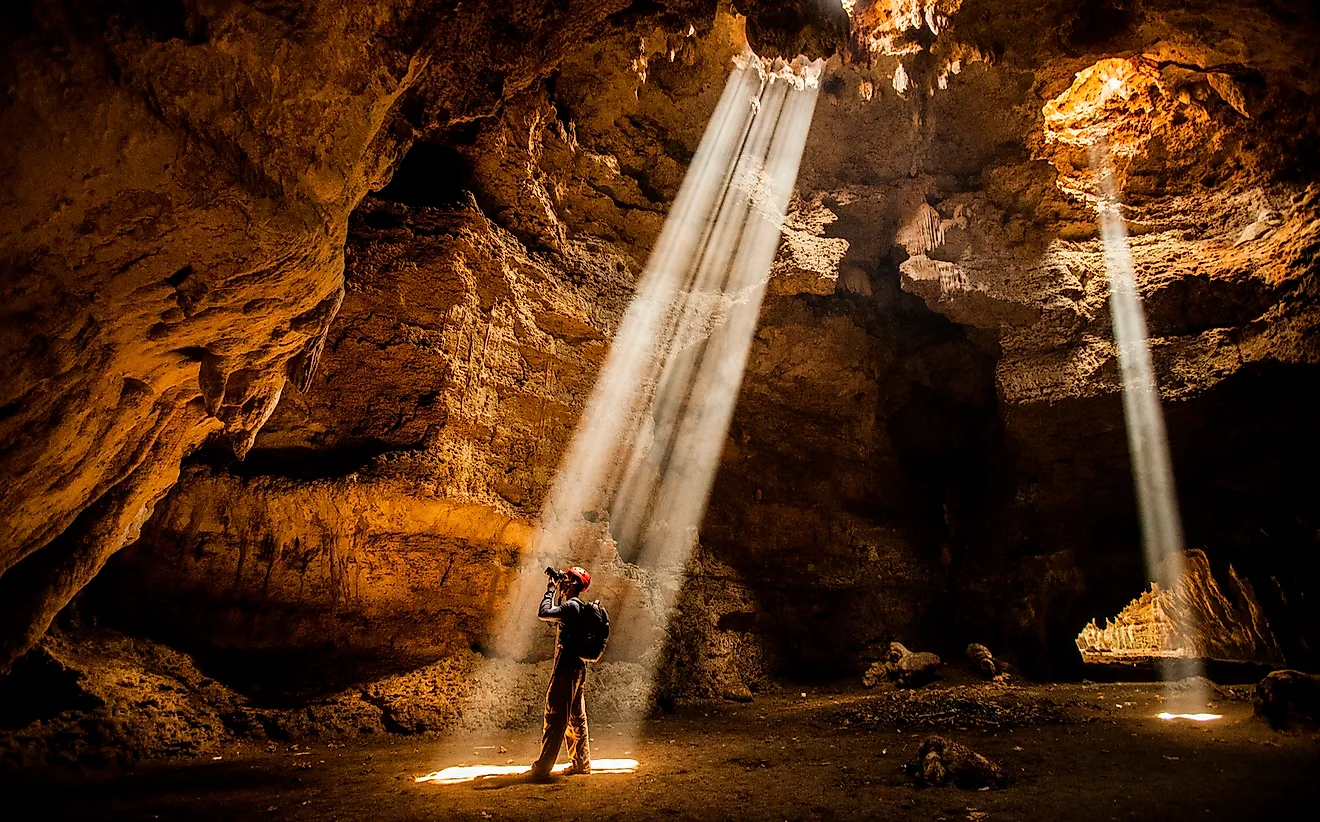Speleology: the Study of Caves

Caves and karsts are landforms formed on rocks through the process of weathering and dissolution. These landforms were once and still are used as homes by certain communities and animals in the wild. A cave can be defined as a natural void in the ground formed by weathering of rocks while karst is an underground drainage system formed by the dissolution of soluble rocks. Caves and karsts range in size depending on the size of the parent material and the intensity of the process of formation. Because of their importance, these landforms have been extensively studied. Some like the Mammoth Cave National Park and the Skocjan Caves have been listed as UNESCO World Heritage Sites.
Definition Of Speleology
Speleology is simply the scientific study of formation, structure, history, and physical and biological features of karsts and caves. It is different from spelunking which is the exploration of karst and caves, especially for recreation or as a hobby. However, speleology and spelunking (also known as caving) are usually connected as the caves have to be explored before they can be studied. Speleogenesis is the process by which the caves originated and developed into their current status. Speleology is a broad field that involves other disciplines such as biology, chemistry, physics, cartography, and meteorology in the understanding speleogenesis. The process of studying caves and karsts involves exploring the caves and collecting samples for study of the different aspects of the caves and karsts.
History Of Speleology
Although caves and karsts have existed since the pre-historic times, little was known about them except their location and probably use. Before the development of modern speleology, John Beaumont described several Mendip caves (located in Somerset, England) in the late 17th century. Before the mid-19th century, caves were considered not to have scientific value except in contributing to other branches of science. Thus, caves were studied as part of other disciplines such as geology and geography among others. Edouard Alfred Martel was the pioneer of modern cave exploration and is considered the “father of modern speleology.” He first introduced speleology as a distinct area of study in France through his extensive cave explorations and founded the “French Federation of Speleology” in 1895. The society, also known as Societe de Speleologie in French, became the first organization to be fully devoted to the study of caves.
Branches Of Speleology
Speleology, like most scientific disciplines, has different branches that deal with the different aspects of caves and karsts. The three main branches of speleology identified by the International Union of Speleology are biology speleology, physical speleology, and speleo-anthropology. Biospeleology studies the ecosystem of the caves and karst, their characteristics, adaptations and how they affect the process of cave formation and structure. Physical speleology is the study of the physical structure and properties of the caves including hydrology, topography, and geology. Speleo-anthropology, on the other hand, is the study of the history of caves and their roles in the history of the human race. Speleologists also work with archaeologists to study the underground tunnels, ruins, aqueduct, and sewer.











